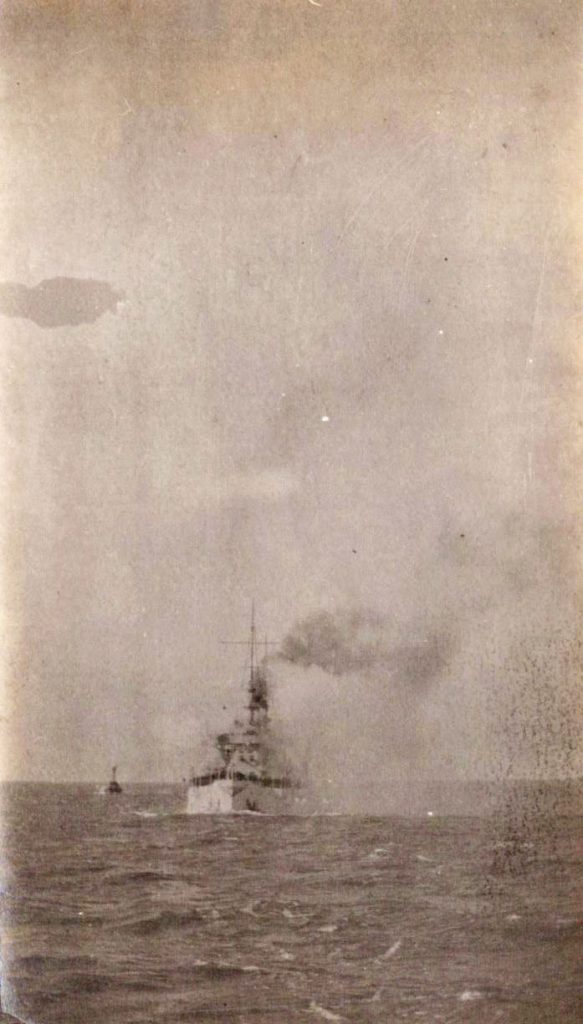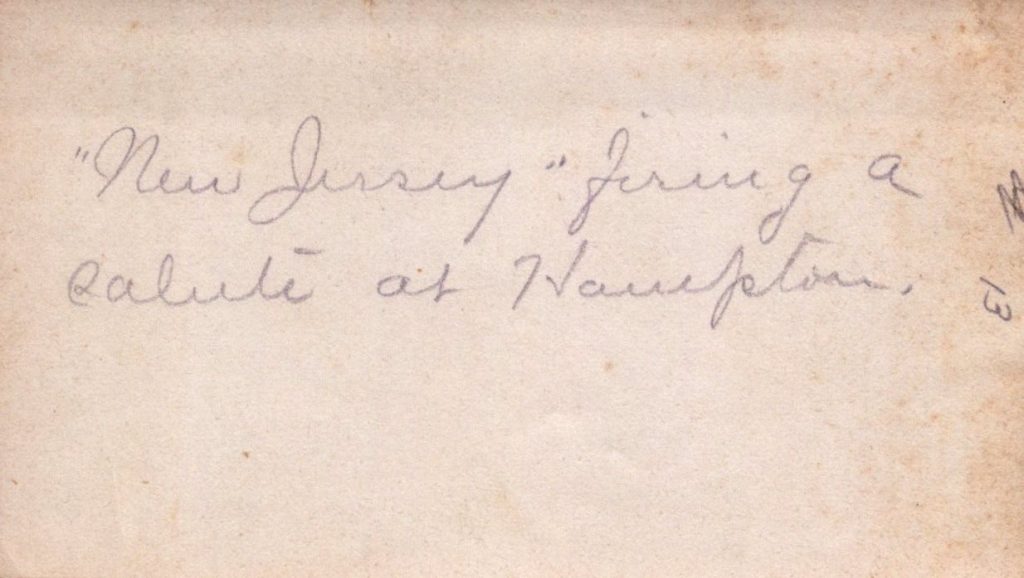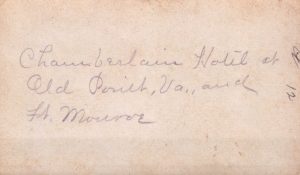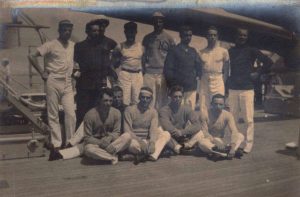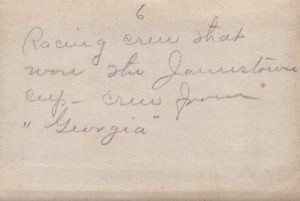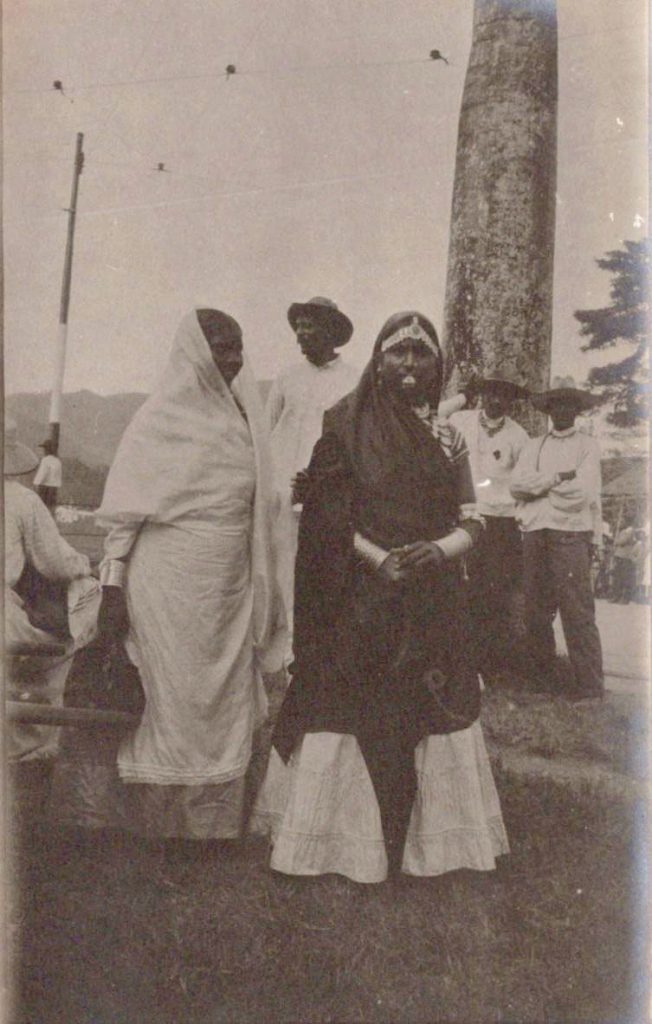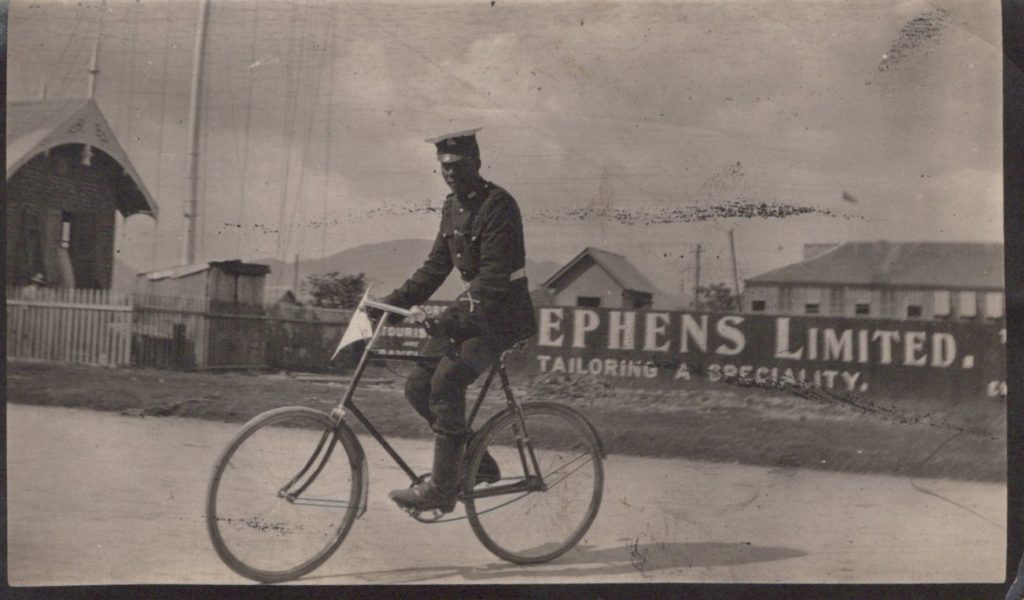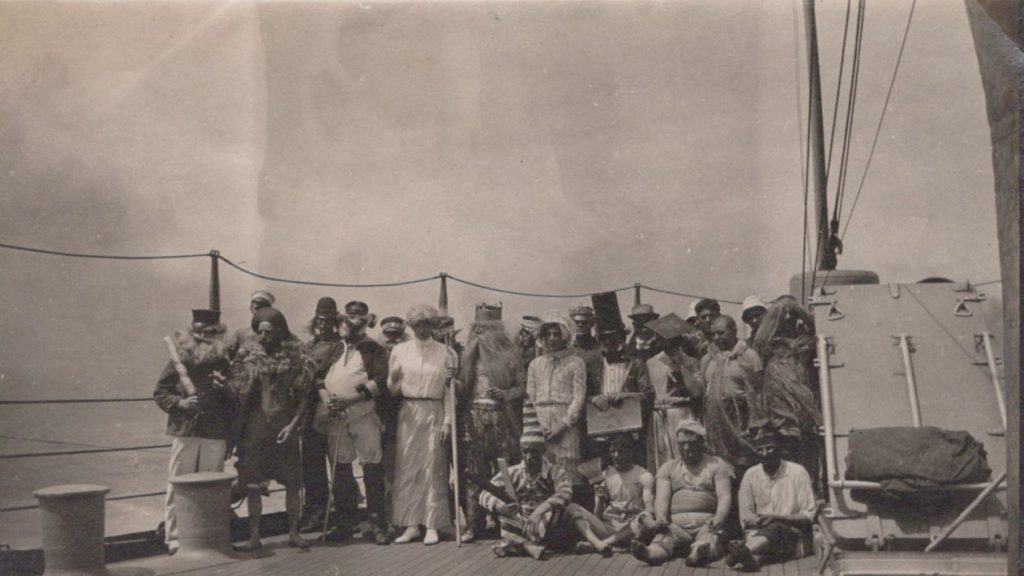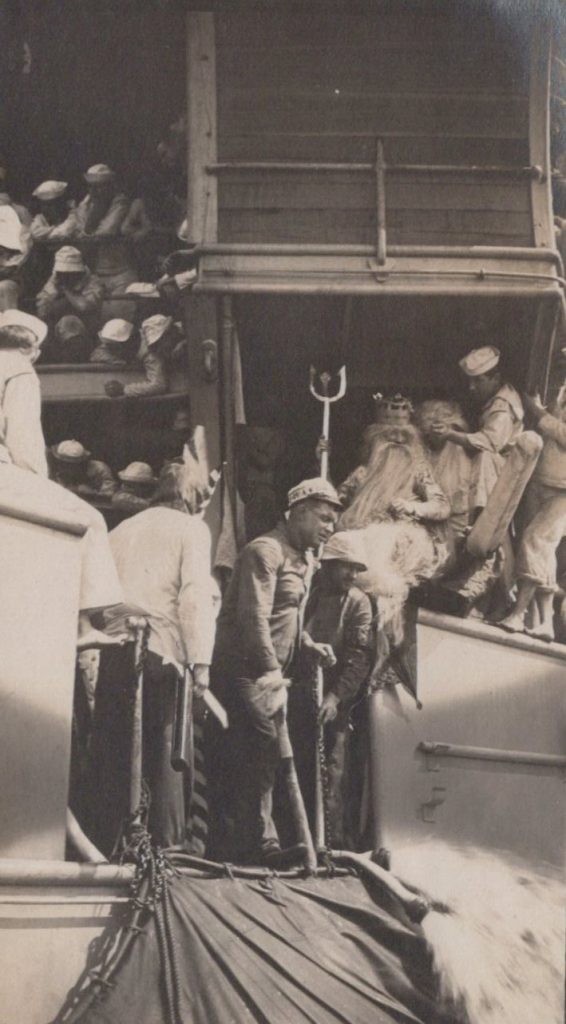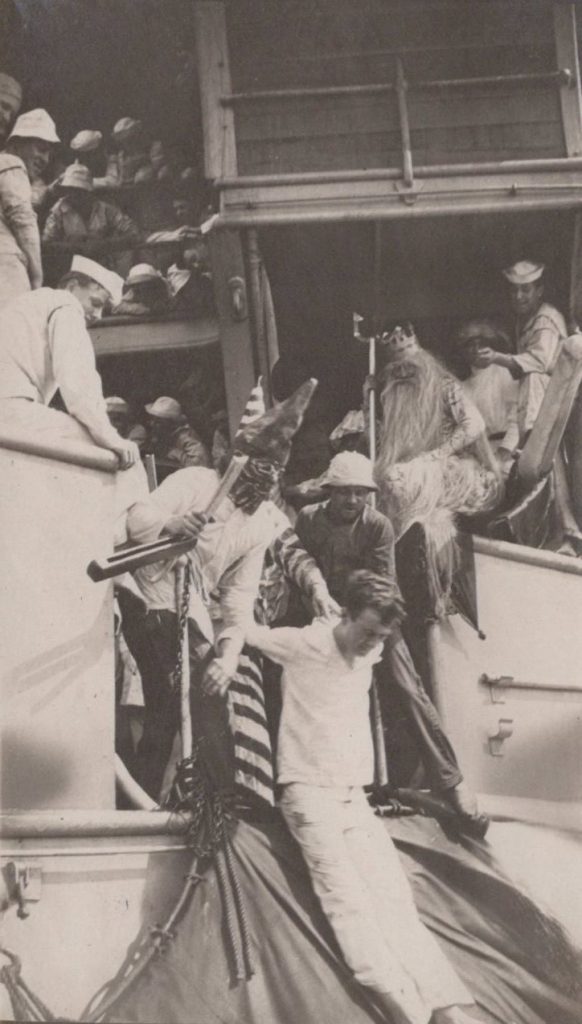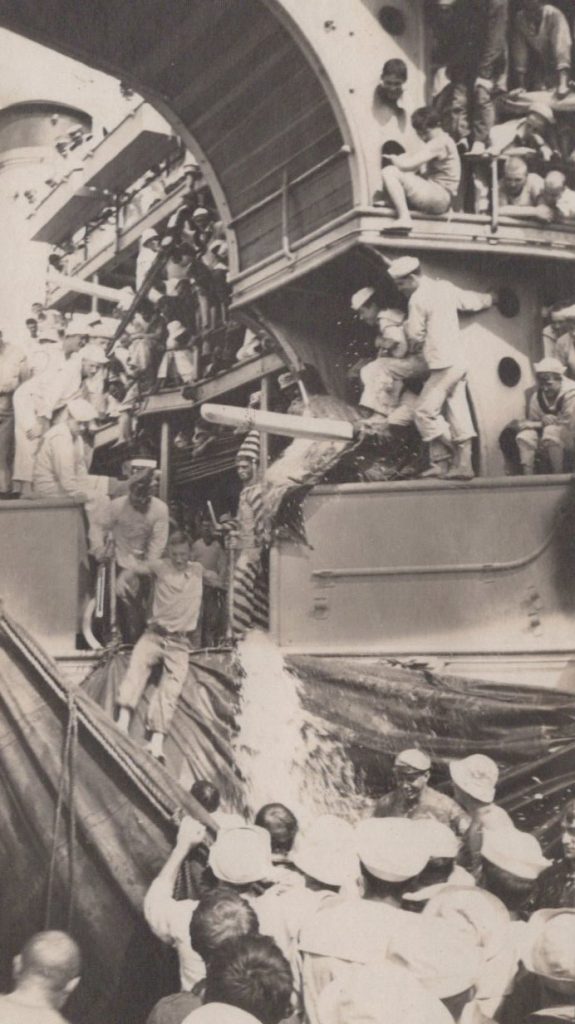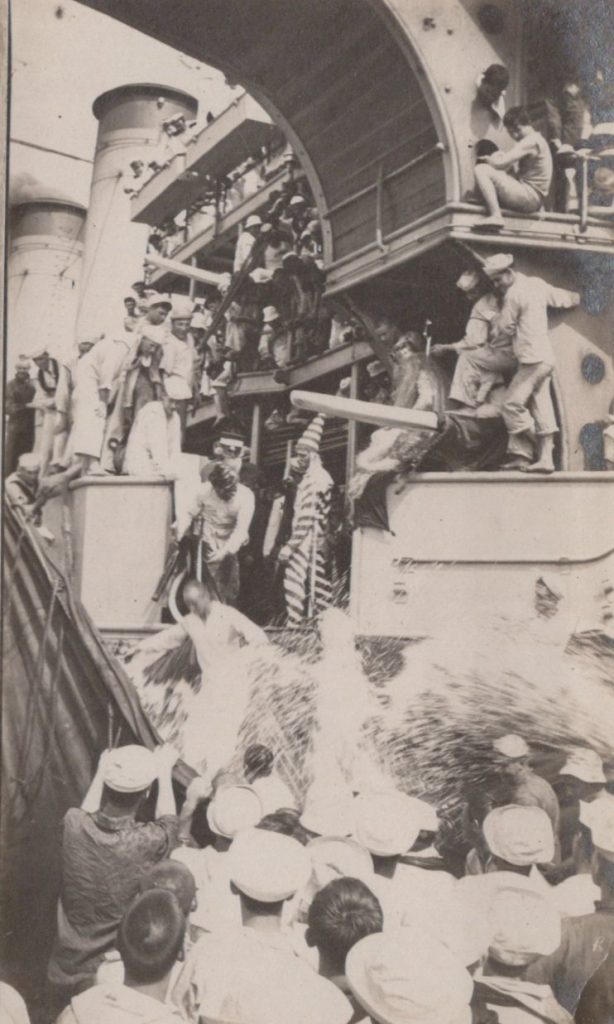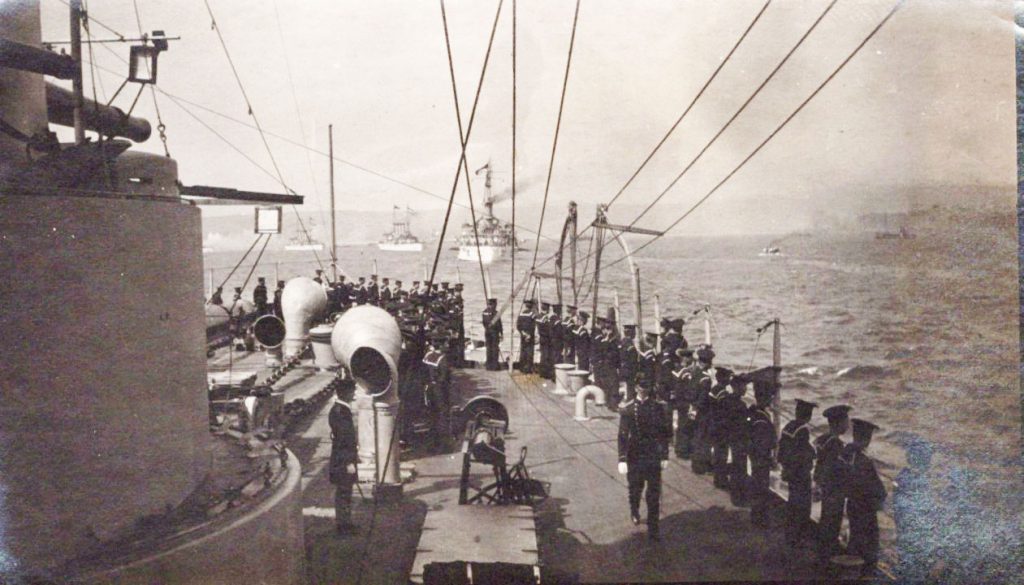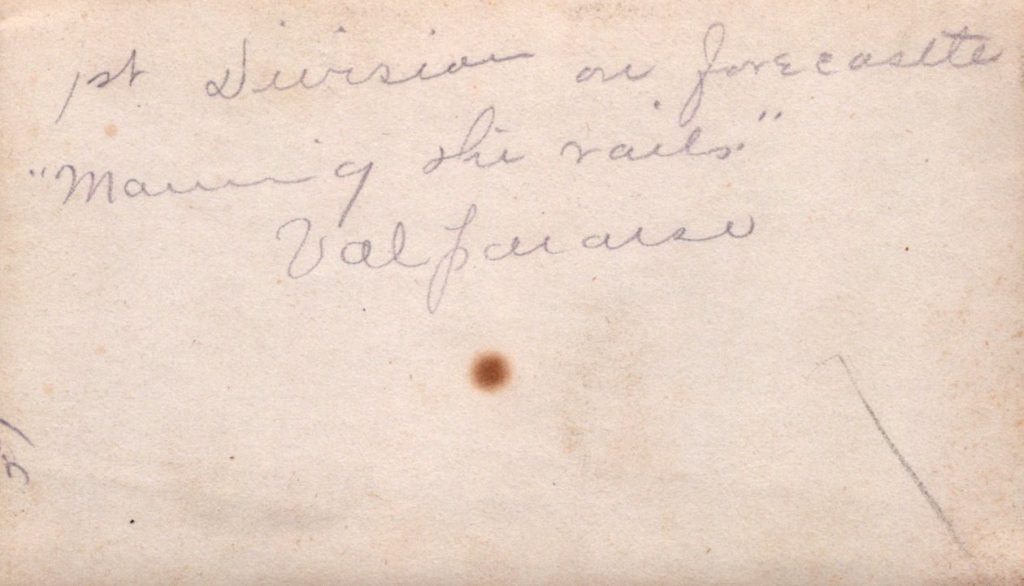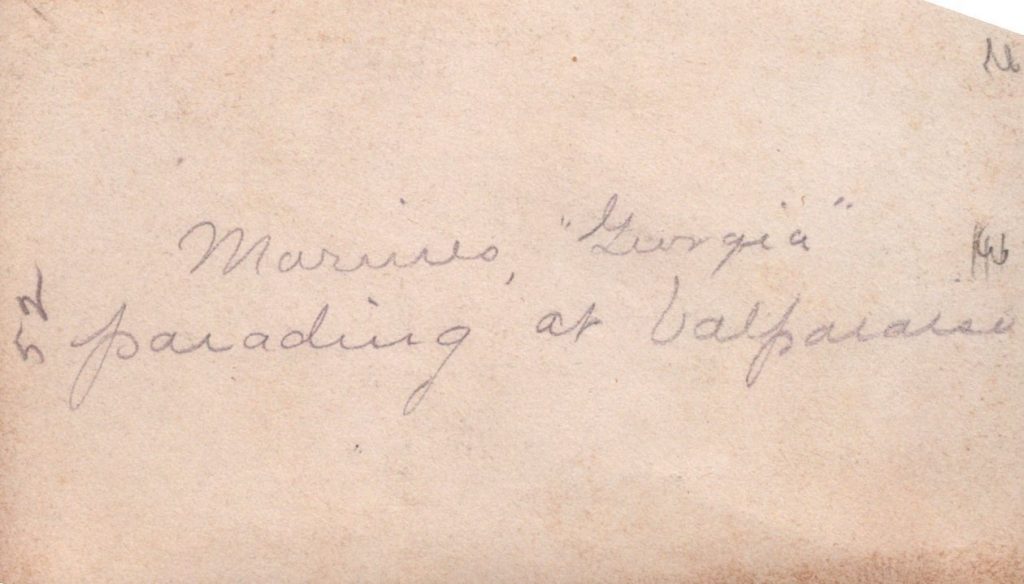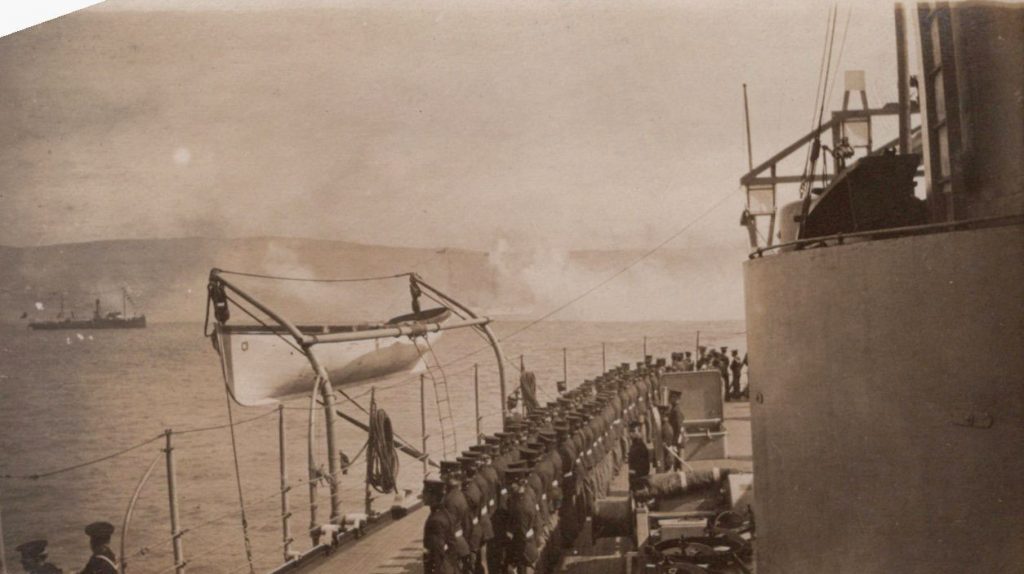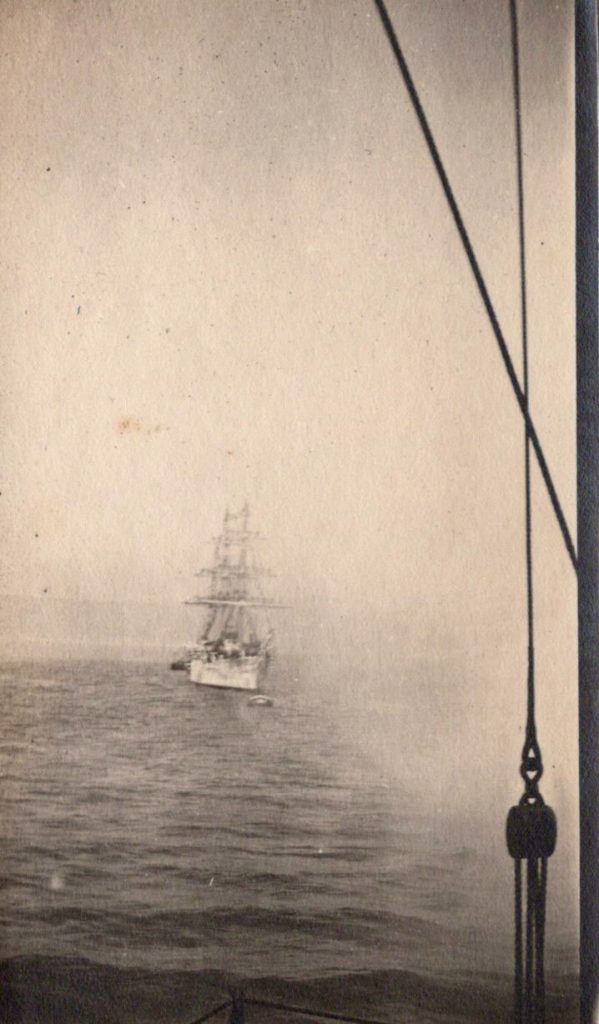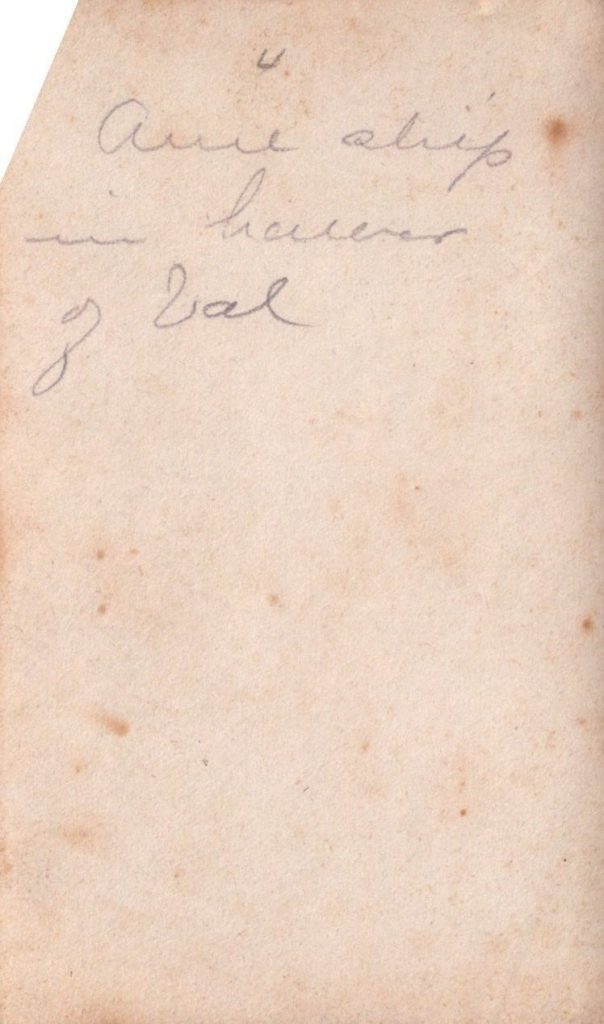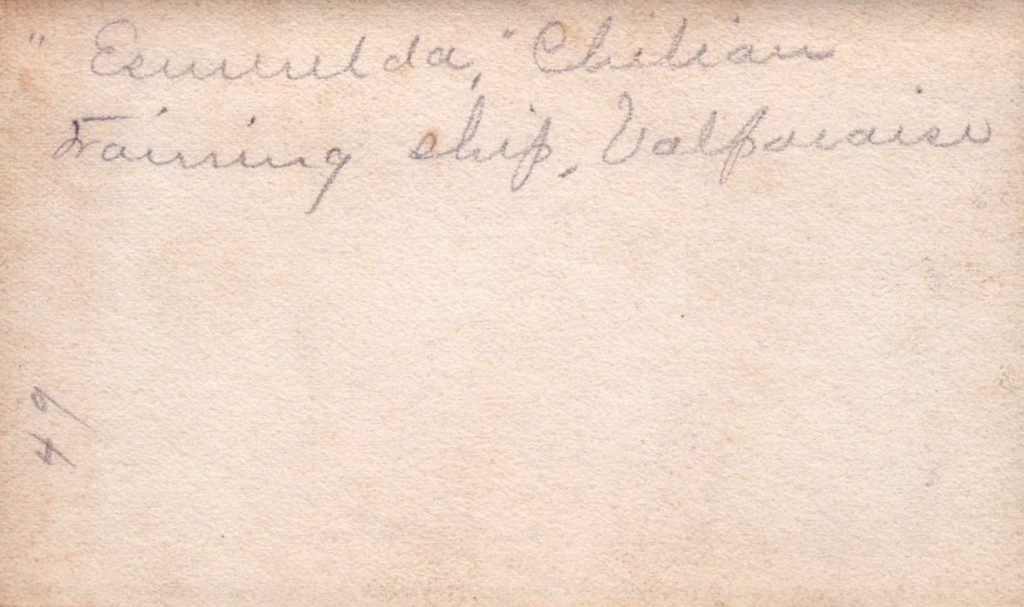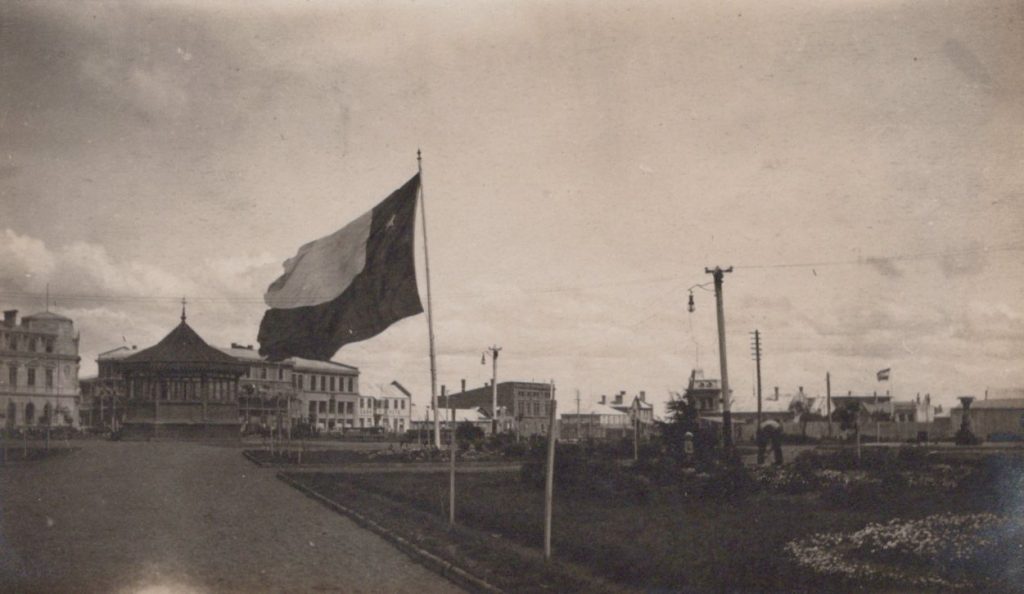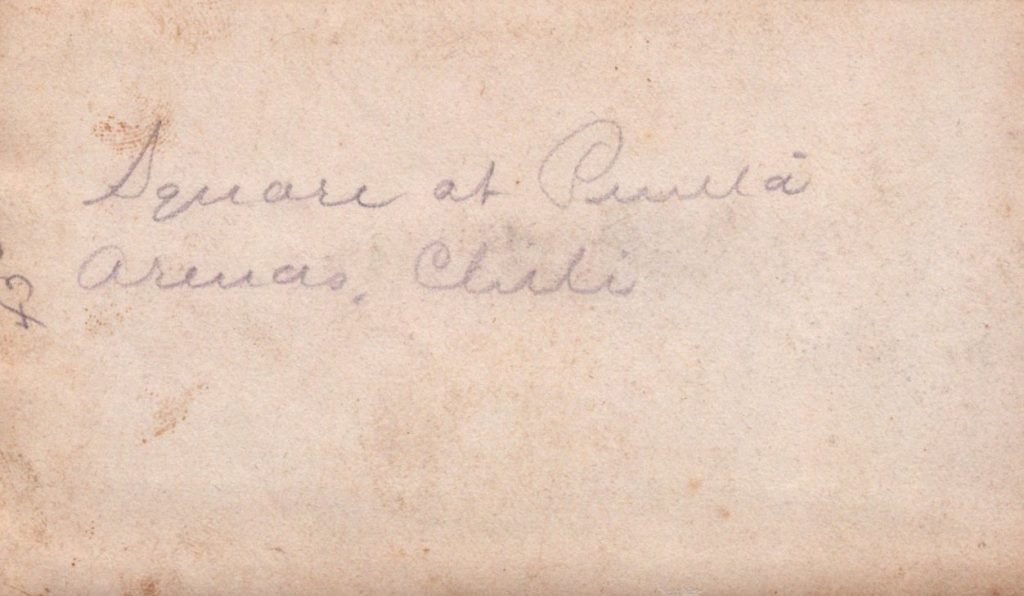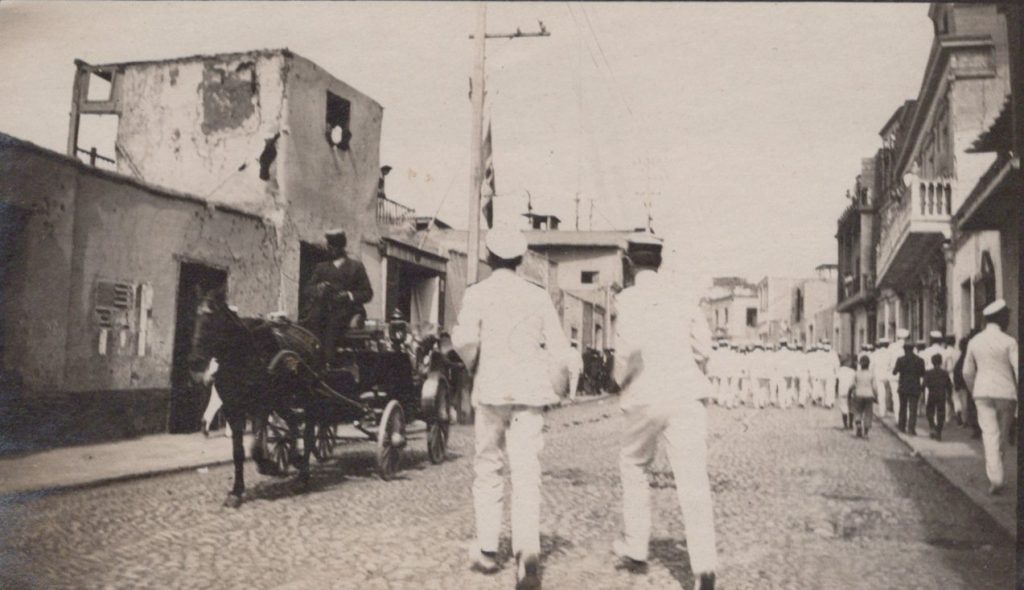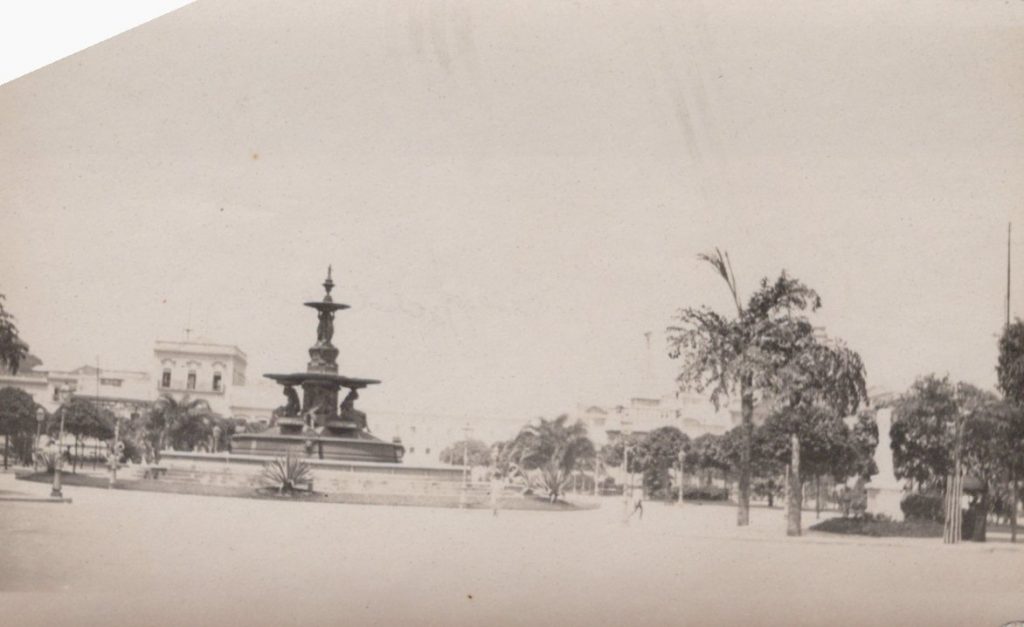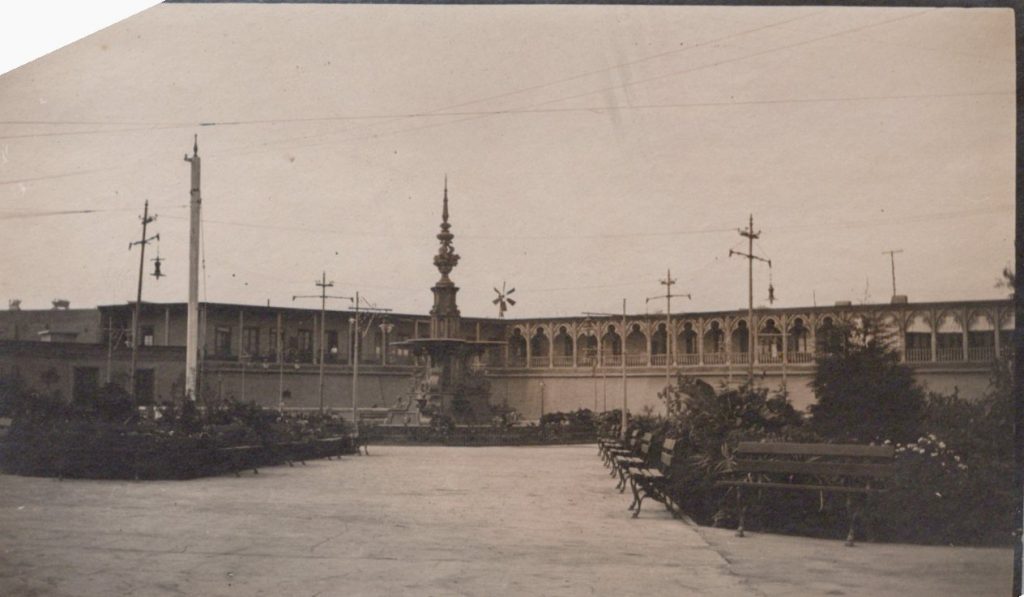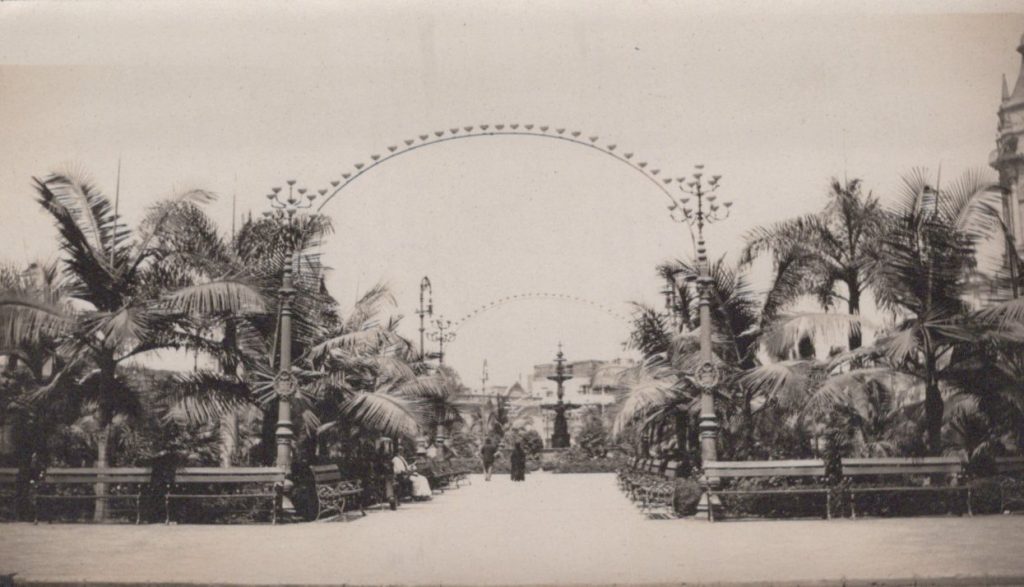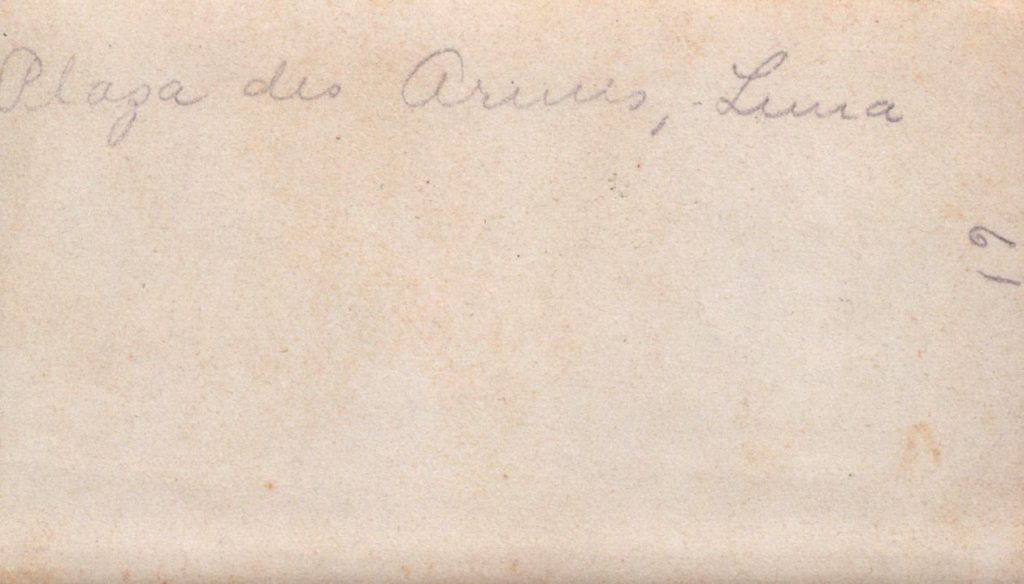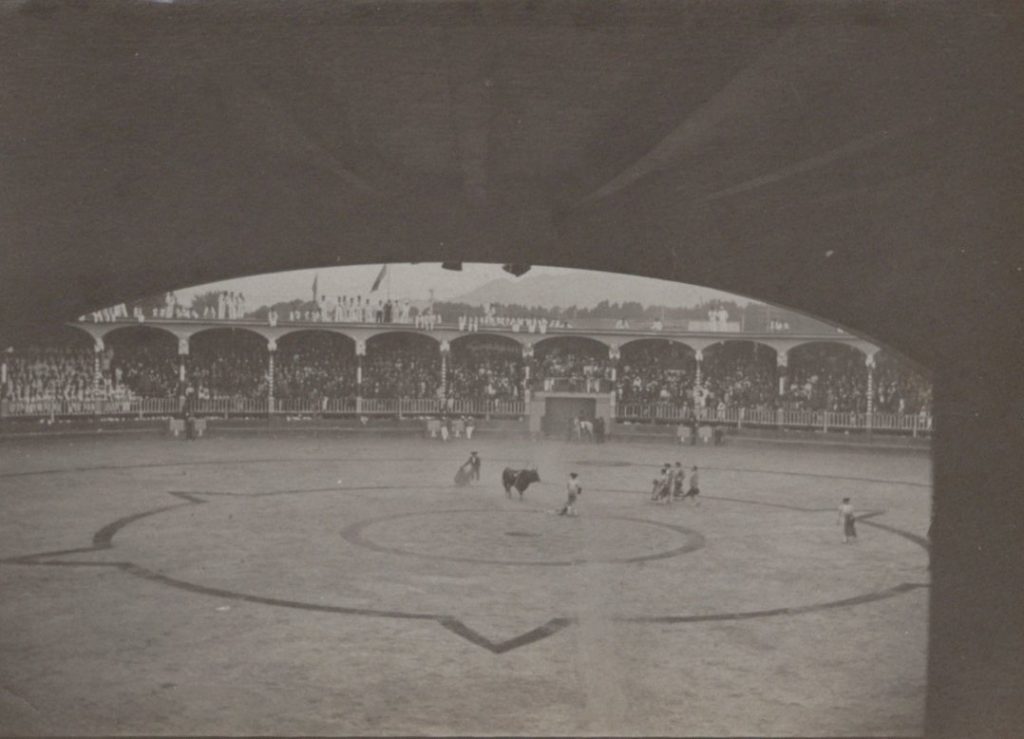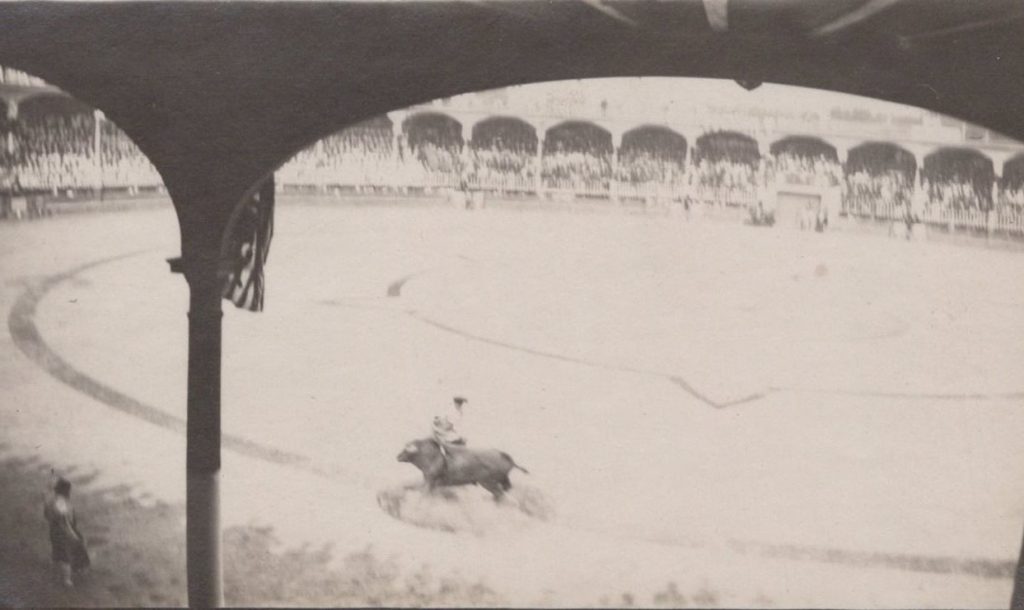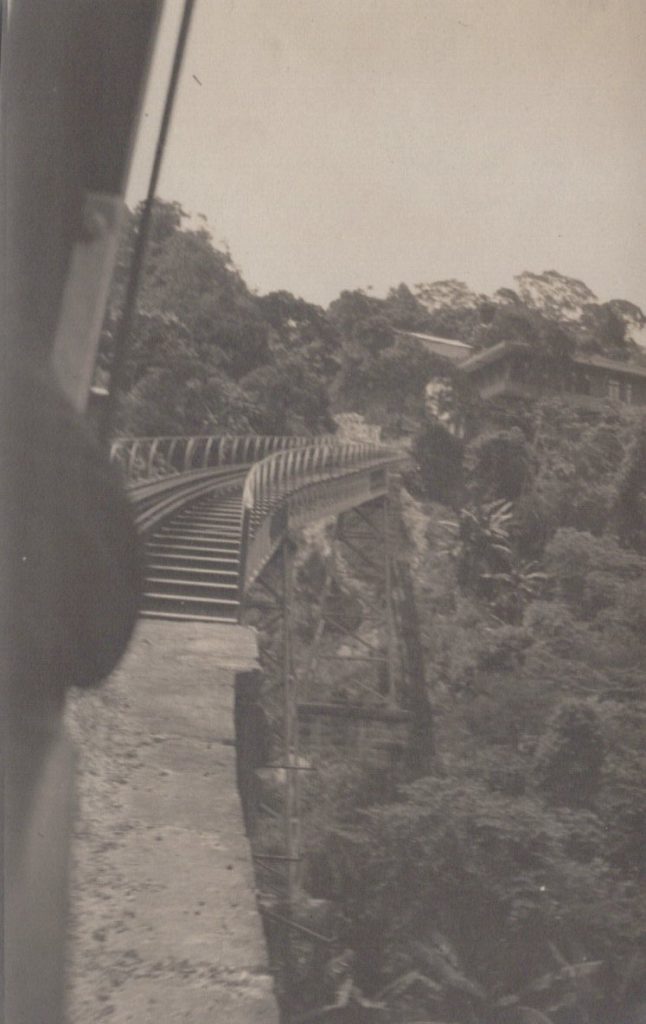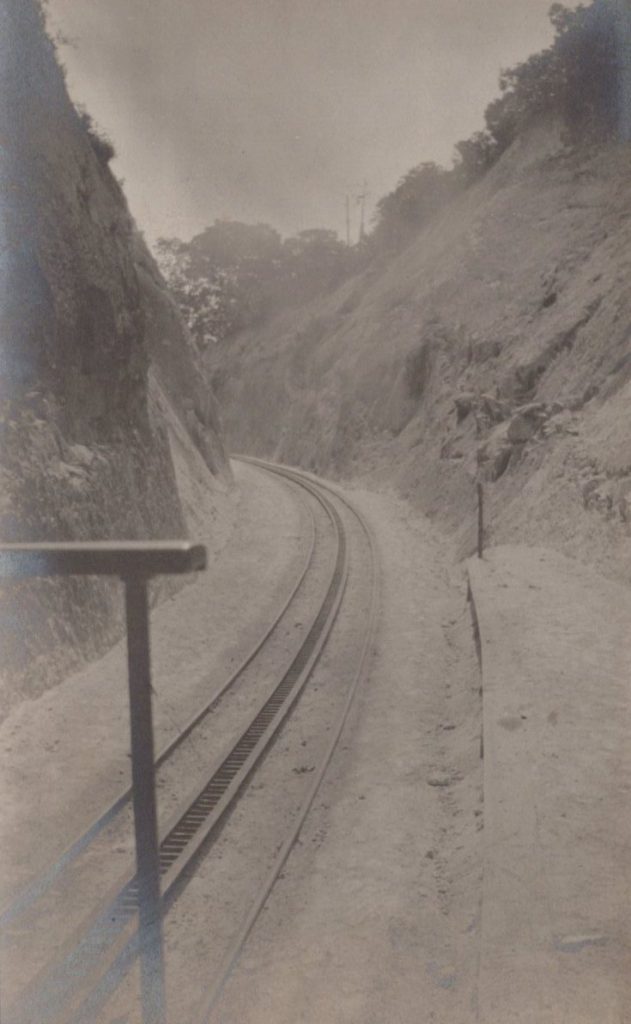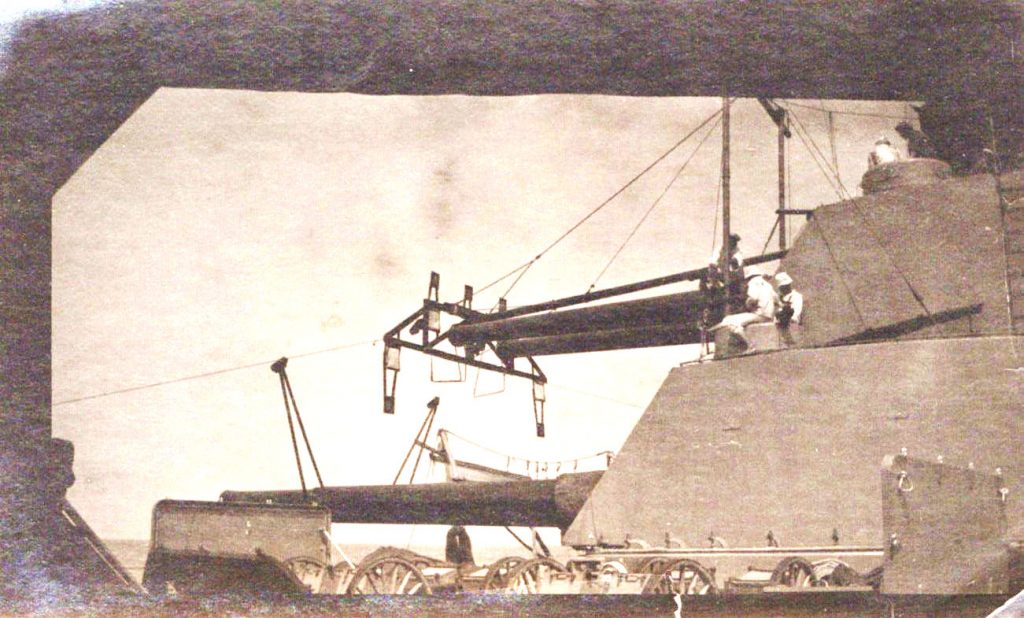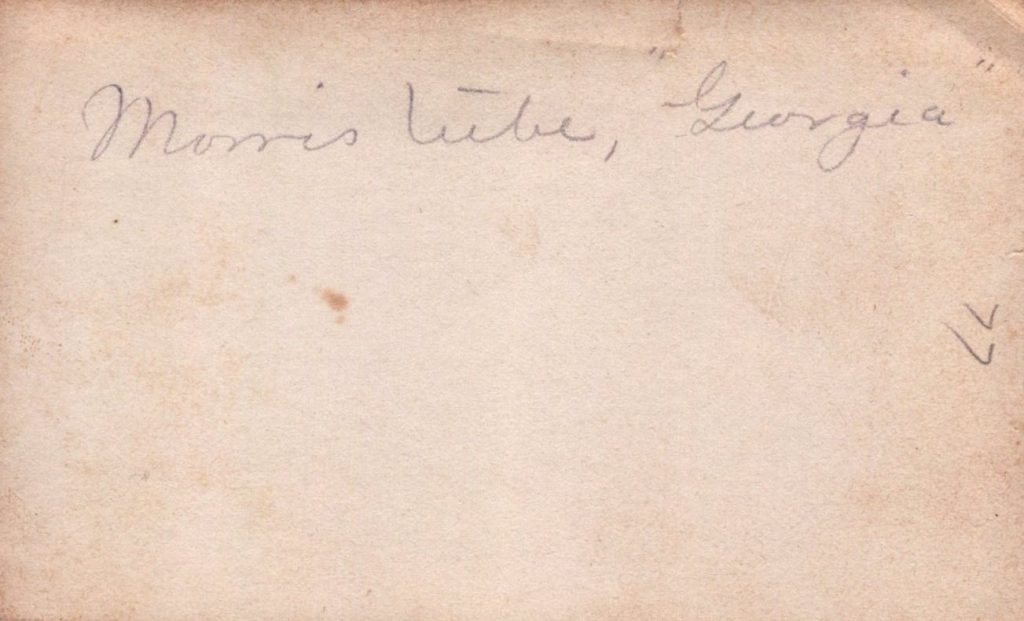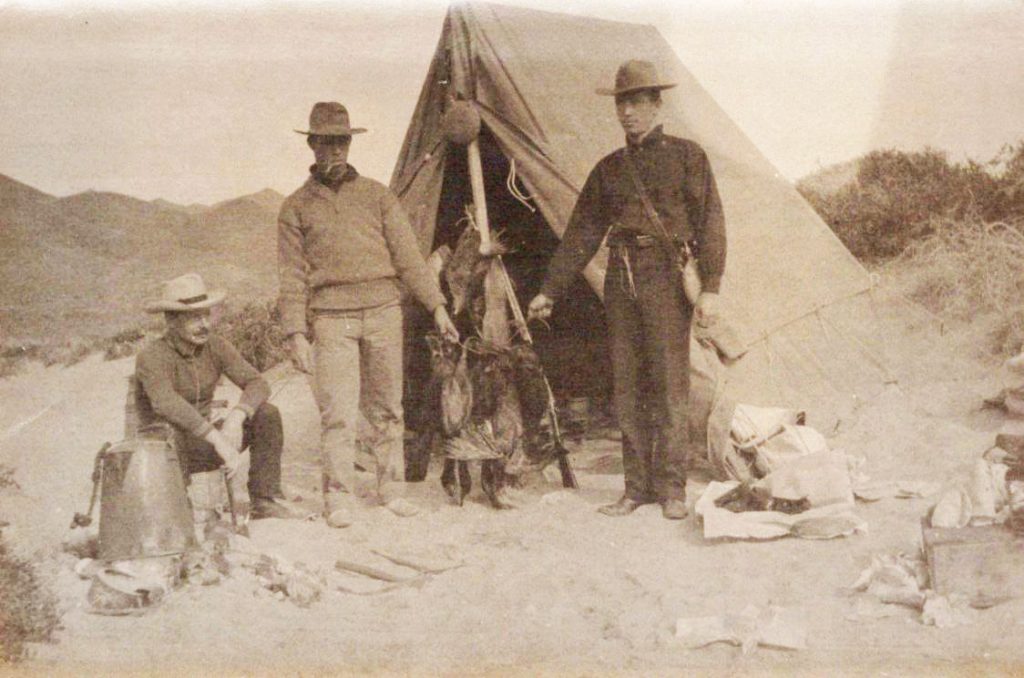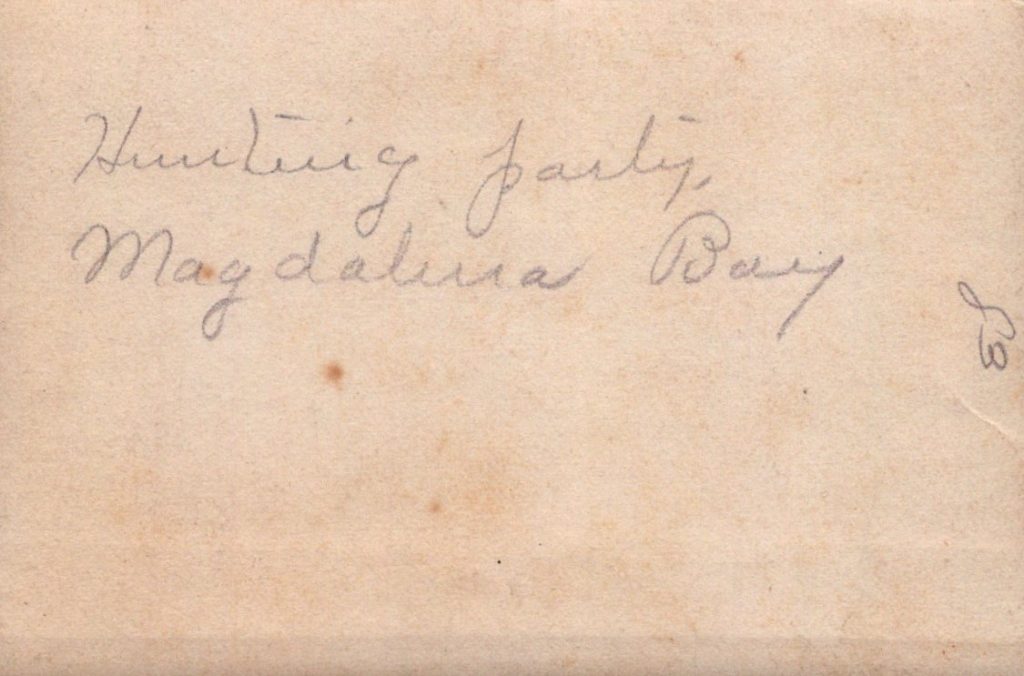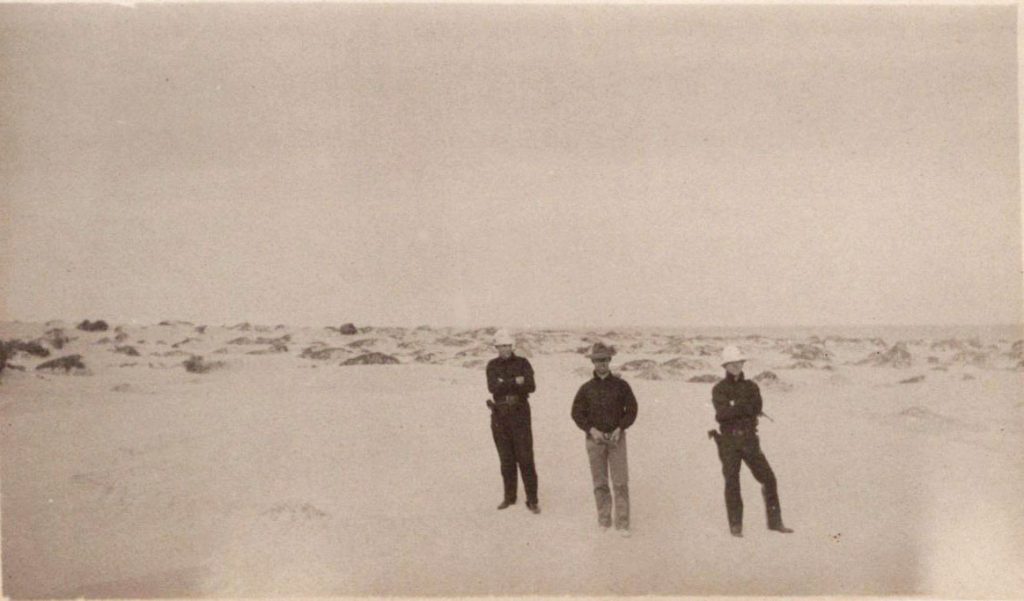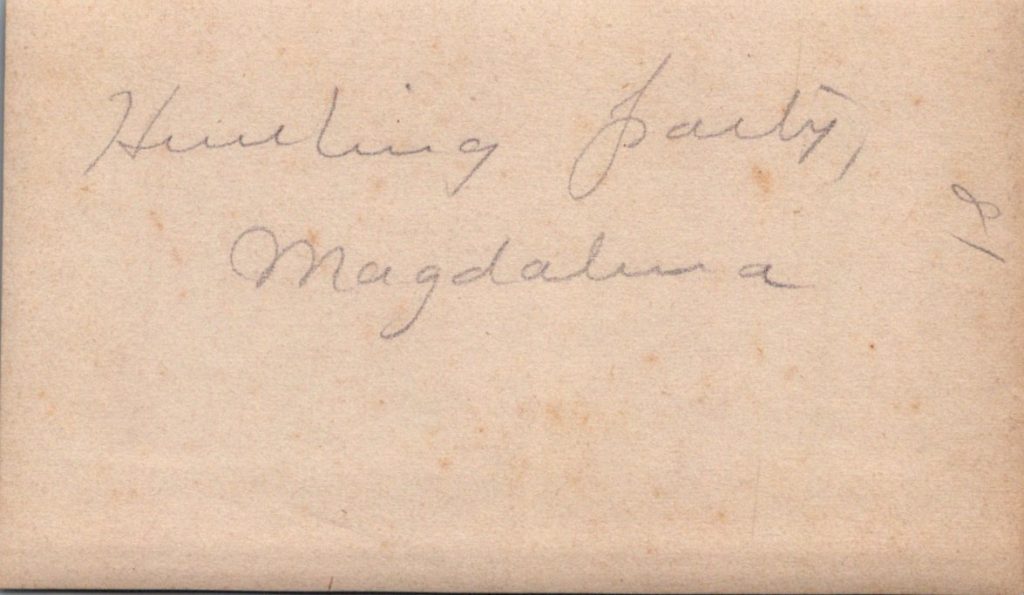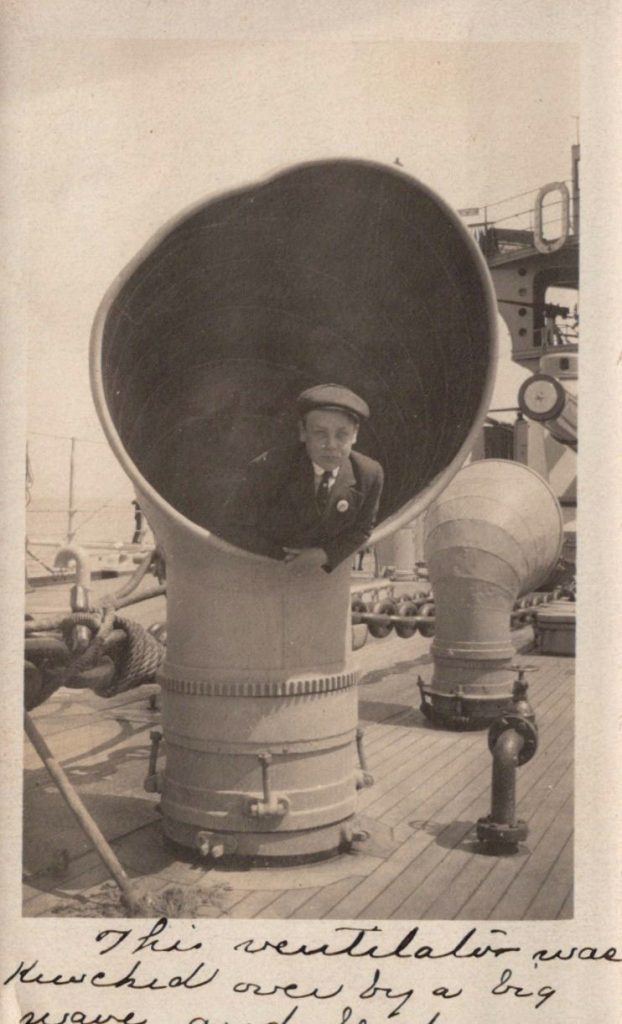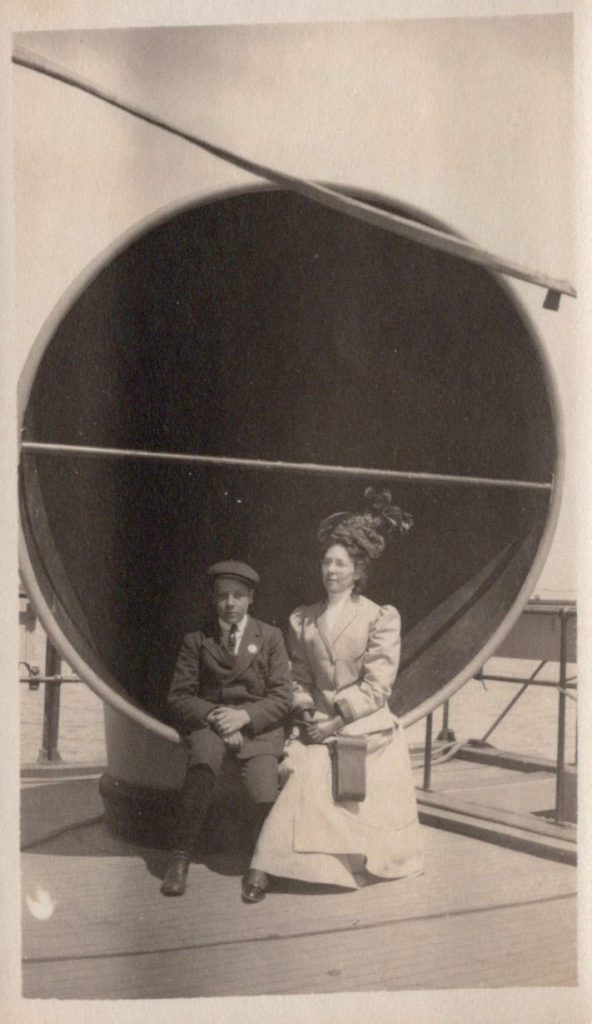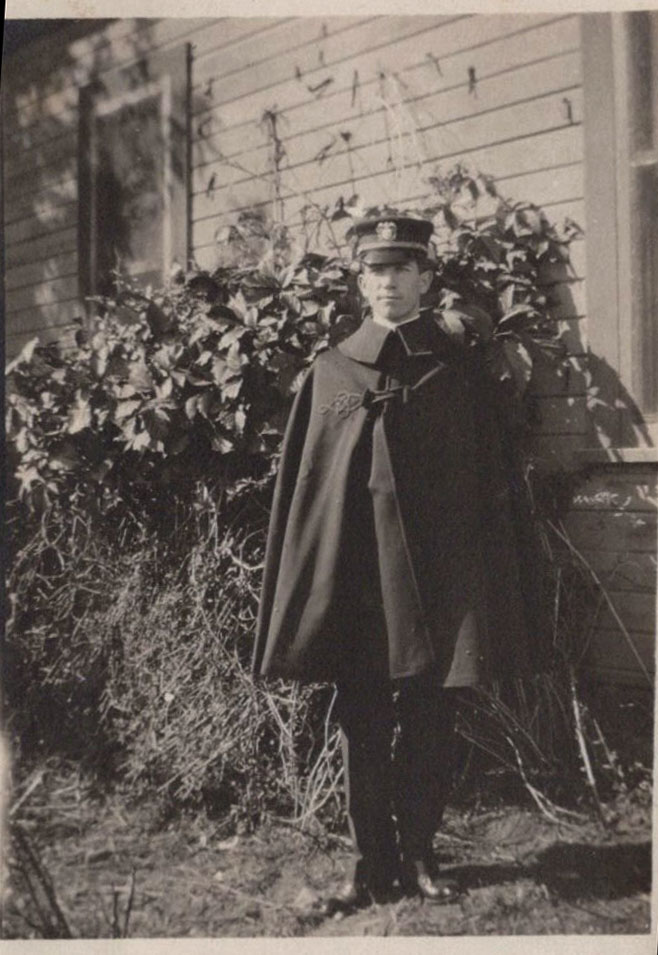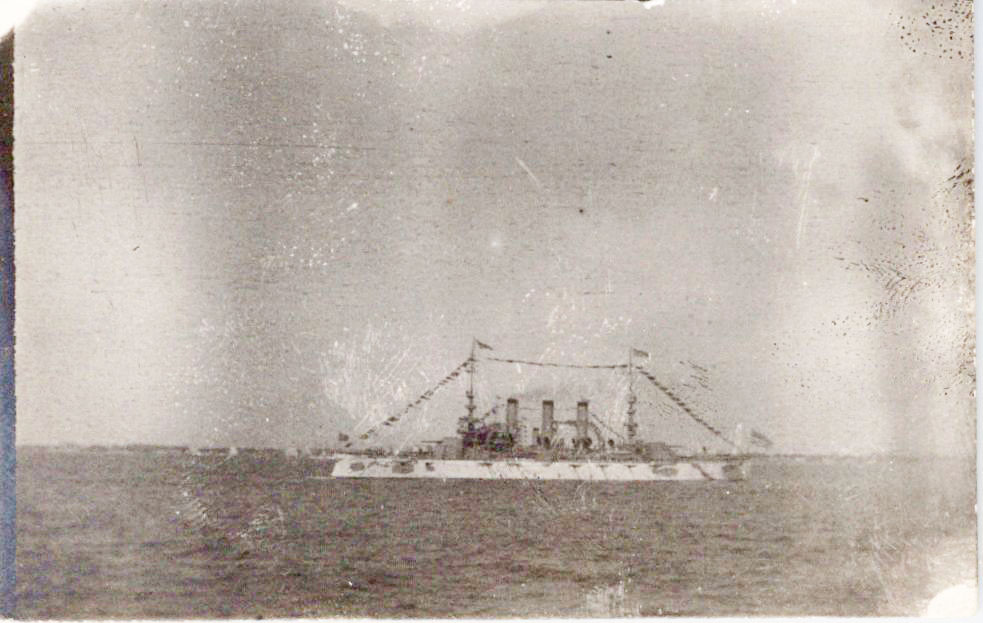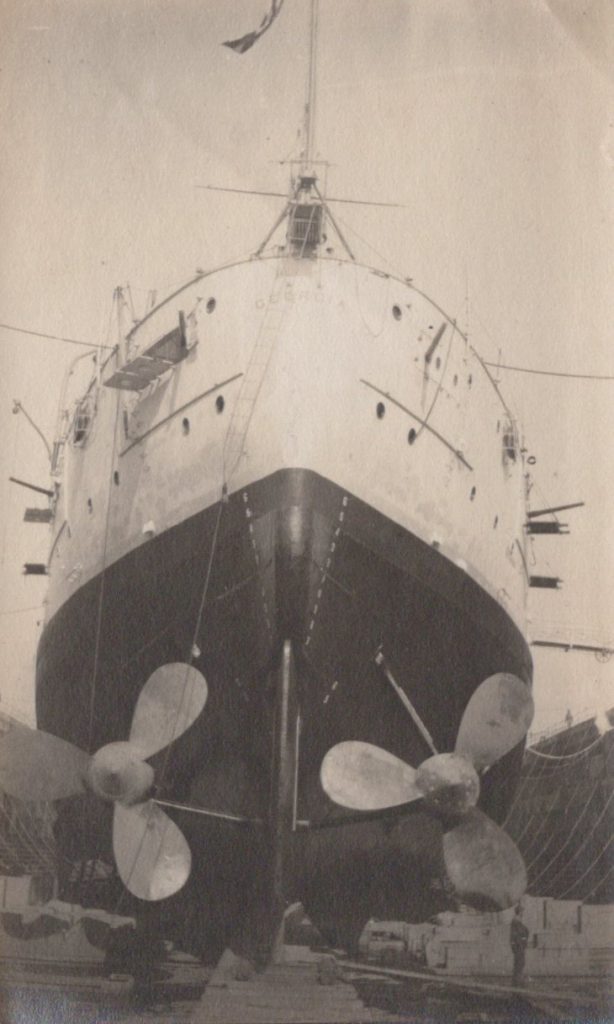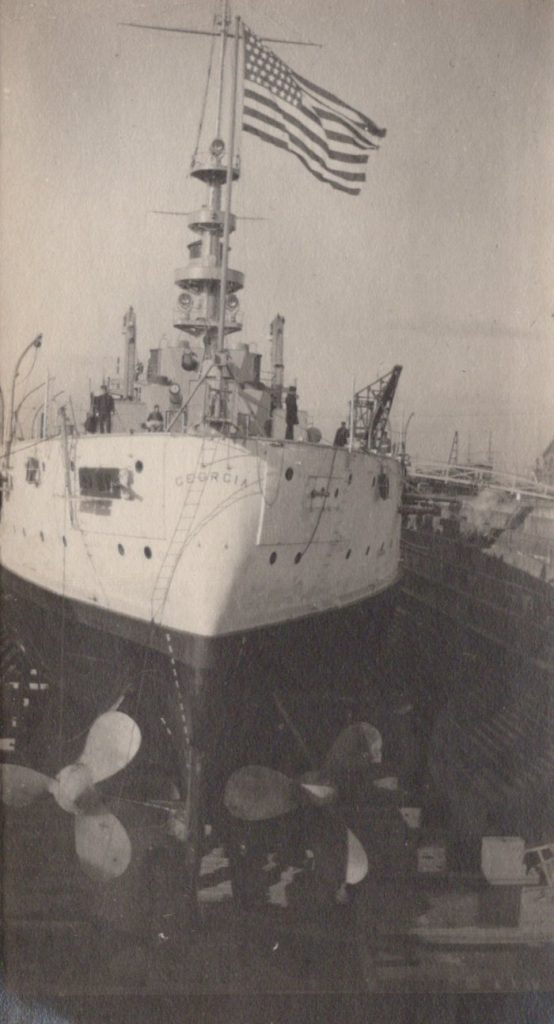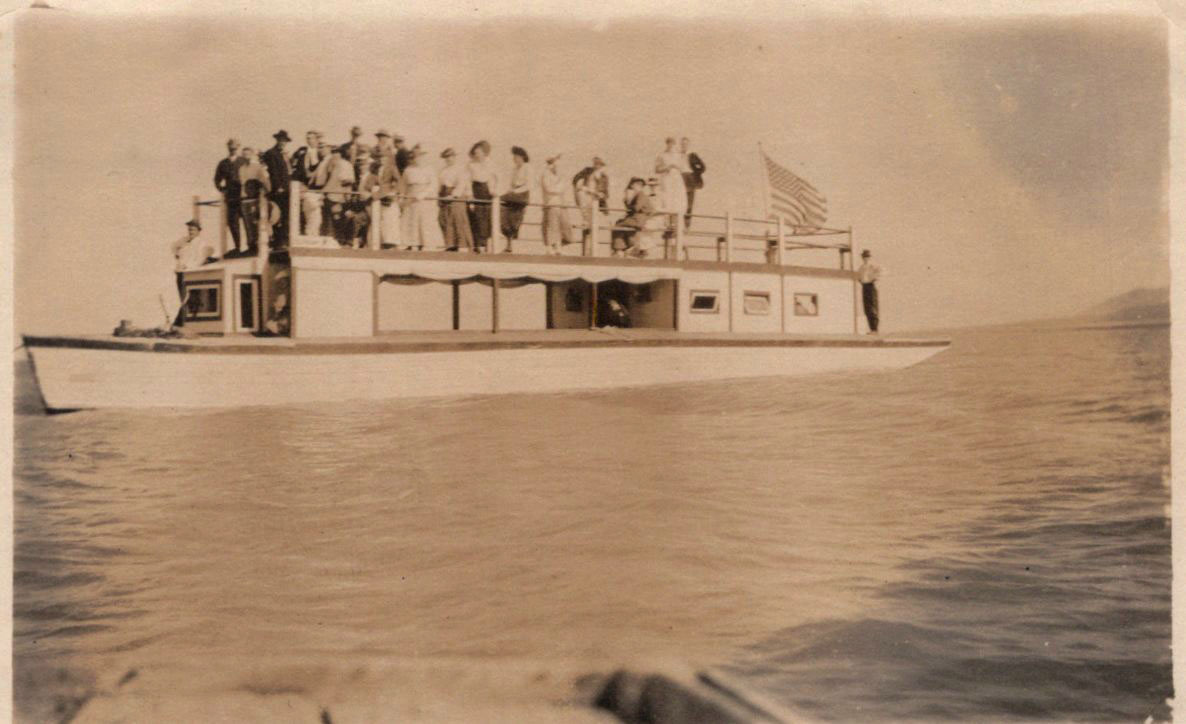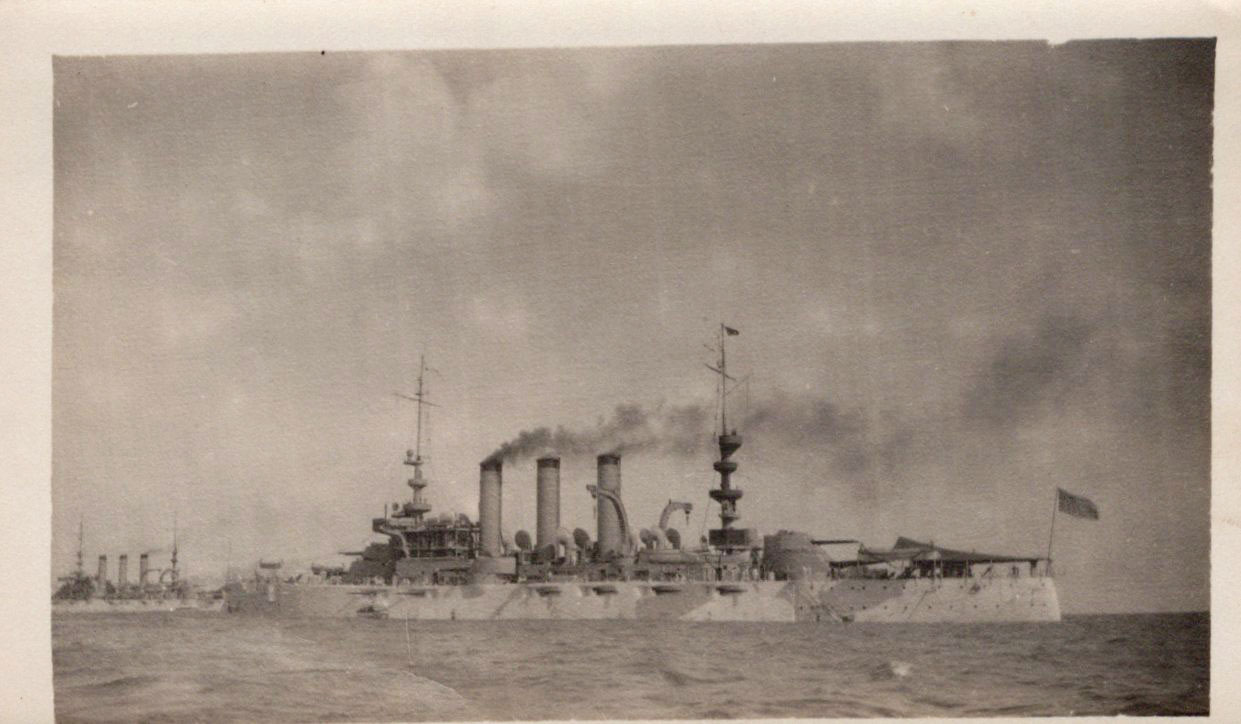Apologies, but no results were found for the requested archive. Perhaps searching will help find a related post.
Each photograph of this collection is slightly different in size and framing. William probably had a space that could be temporarily be used as a darkroom and he processed and printed his Kodak camera results between shipboard evolution. The photographs have survived well showing his care to detail in the mixing of the chemicals and the duration he allowed them to bathe to prevent future staining.
From the beginning of the cruise William numbered his photographs to help keep them in order. This has been helpful at time to determine where and when a particular photograph was taken. These photographs in the days up to departure and on the day of departure are some of his first. "New Jersey firing a salute at Hampton (13), "Chamberlain Hotel at Old Point, Va., and Ft. Monroe" (12), and "Racing crew that won the Jamestown cup - crew from "Georgia" (6)."
Port of Spain, trinidad
The great thing about a Midshipman having a camera in his hands on his first cruise is the fresh prospective and viewing of a subject. William found the policeman on the bike in uniform worthy of a photograph, a Buddist woman in Trinidad interesting, and the line of ships entering port worth capturing. Below: Entering Dragon's Mouth, Port of Spain, New Jersey first."
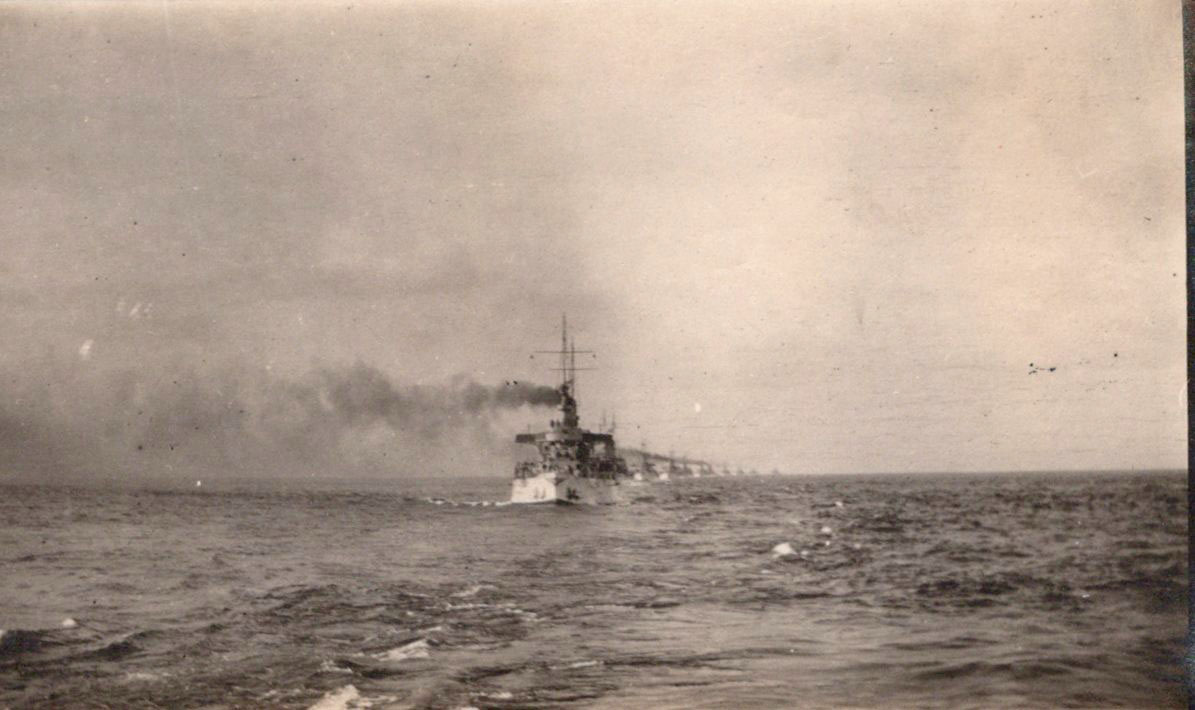
crossing-the-line, uss georgia
As a midshipman, the ceremony and initiation of a sailor to the Realm of Neptunus Rex must have been quite an experience. William himself would have been initiated but also found time before or after to photograph the experience and cast of the crew during the ritual of mayhem.
valparaiso, Chile
With each of these collections there are strong points and weak. There are no photographs from Rio de Janeiro here, but a great set of Valparaiso, Chile and the events in the harbor. Hopefully those photographs are out there and will one-day be reunited with the collection.
callao, peru
Midshipman Child did get around Callao and Lima participating in the two biggest events planned for the fleet's visit, the bull fights at Plaza do Toros and the train ride to the top of Mount Oroya, the highest railroad in the world.
The photograph at right shows the fountain at the Central Plaza in downtown Lima.
Below: "On the way to the bull fight" - "Square in Callao Customs House in the background" - "Square at Customs House Callao"
The train trip to the top of Mount Oroya was planned with two trains, one for Officers and their guests followed by a train with the sailors. At 10,000 feet some started feeling the altitude and fell ill. At 13,000 feet as an avalanche fell in behind the trains trapping them. The engineer backed the first train to the last rest stop which had four bunks that sailors had already commandeered for the overnight stay. The next day a train arrived and passengers were able to climb through the rocks blocking the tracks and make their way down the mountain.
The photographs at left Midshipman Child took going up the line before all of the excitement.
magdalena bay
Magdalena Bay was not a scenic destination. The three photographs from Midshipman Child are interesting. The first showing the 8" guns forward being bore sited for gunnery. William refers to "Morris Tube" to compare it to the device inserted into a Martin Henry to convert it from a smooth bore to a grooved rifle to improve accuracy. The Morris Aiming Tube, as it was know, greatly improved the accuracy of the rifle by spinning the round. The excitement for the trip ashore in Magdalena was a hunting trip with the "buds" seen below with their best "Jessie James" going and the results of their expedition.
welcome home - arriving on the west coast
For every crew member of the ships, arriving in California was arriving "home." They had family and friends, and the reception from a Nation. In each port going up the coast the greeting were plentiful and sincere. As a young midshipman from the Naval Academy, William was in great demand. From the photographs he had his Mother, younger brother and a young woman visit in San Francisco. In the collection their were multiple copies of many of these photos that William had produced to mail out to friends and family. Most of these were simple contact prints where the negative is the size of the print and the exposure done with turning on and off a light. Some had a different frame around them and some, with a black border had no frame.

